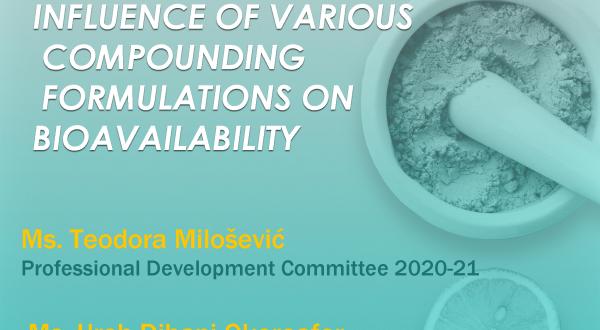
Pharmacopoeias around the world
Compounding Corner - June
Pharmacopoeias around the world
by Clement Haeck,
Professional Development (PD) committee member 2015-2018;
Compounding Event (CE) coordinator 2015-2016
When it comes to compounding medicines, one can refer to pharmacopoeias or compendial texts. Depending on the country, one or several pharmacopoeia(s) may be used. The most commonly used ones (and their current editions as of May 2018) are the:
-
European Pharmacopoeia (Ph.Eur. / EP) 9th Ed.
https://www.edqm.eu/en/european-pharmacopoeia-ph-eur-9th-edition
-
United States Pharmacopeia (USP) 41st Ed.
-
Japanese Pharmacopoeia (JP) 17th Ed.
https://www.pmda.go.jp/english/rs-sb-std/standards-development/jp/0019.html
In an effort to harmonise all texts on a global level, the World Health Organization (WHO) created The International Pharmacopoeia (Ph. Int.). Its aim is to:
-
Standardise vocabulary and terminology
-
Provide global quality specifications for selected dosage forms and pharmaceutical substances (active ingredients and excipients)
-
Support general methods of analysis to be used worldwide
At the first World Health Assembly (WHO annual assembly) in 1948, member states agreed on resolution WHA1.27 to establish the Secretariat of The International Pharmacopoeia and the "Expert Committee on the Unification of Pharmacopoeias of the WHO", which became the "Expert Committee on Specifications for Pharmaceutical Preparations" in 1959.
The Ph.Int. helps to ensure safety and efficacy of medicines through overall quality control (QC) and quality assurance (QA) of pharmaceuticals.
http://www.who.int/medicines/publications/pharmacopoeia/en/
The first edition of Ph.Int. was published in 1951 as two printed volumes and encompassed all the medicines that were available and sold globally. Since 1975, and compared to other pharmacopoeias, The International Pharmacopoeia gives priority to medicines on the WHO Model List of Essential Medicines, and more recently to medicines of major public health importance and those recommended by specific WHO disease programmes. For instance, medicines to prevent and/or treat malaria, tuberculosis and HIV/AIDS, as well as medicines for children are included in The International Pharmacopoeia. Priority is also given to medicines evaluated by the Medicines Prequalification Programme and to medicines for which other pharmacopoeias do not offer any test specifications. The Ph.Int. is only available online since 2015 and can be accessed via the following link: http://apps.who.int/phint/en/p/about/. As of May 2018, the Ph.Int. has reached its seventh edition, published in 2017.
An international consultative procedure via the Pharmacopoeial Discussion Group (PDG) is used to independently develop the globally-harmonized monographs and quality control specifications published in The International Pharmacopoeia. The needs of developing countries are taken into account. The ultimate goal of The International Pharmacopoeia is to provide quality control specifications so as to help enable access to quality and safe medicines worldwide.
If there is no internationally-harmonized text, scientists and compounders have to select texts from one of the pharmacopoeias or have to compromise by following all texts at the same time.



